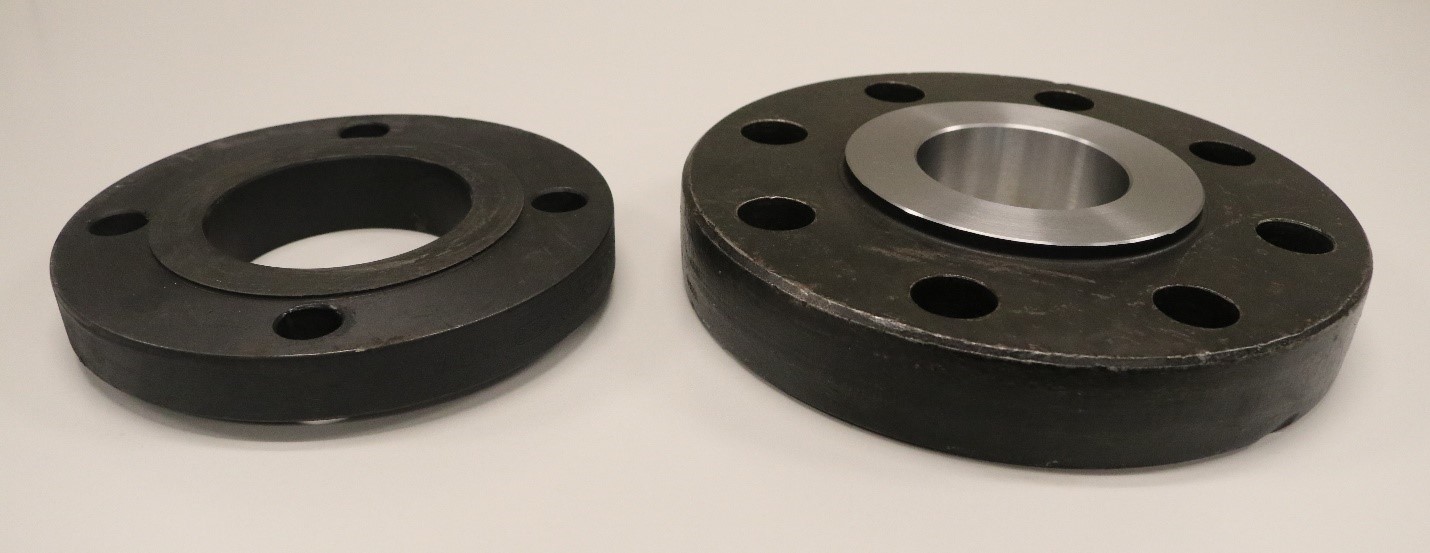Flange Classes Explained
September 30th, 2020
Pipe flanges are often referred to by class, or their lb. designation, or even just as a number followed by an octothorpe (the # symbol), which is the hashtag for you millennials, and the pound sign for everyone else.
These terms are all used interchangeably to describe the pressure rating of a flange. To make things more confusing, a 600-pound flange does not correlate to a rating of 600 psi. So what does it all mean?
[600-pound flange, 600# flange, Class 600 flange, 600lb pressure rating flange]
Why Standard Flange Pressure Ratings is Crucial
Imagine being a pipefitter, whose job is to install, assemble, fabricate, weld, repair, and maintain piping systems. Now imagine if there were no standardization for the parts used in these systems.
One 8” flange of a certain class could have 4 bolt holes, while another could have 8 bolt holes. The piping and flanges could have different pressure ratings that vary by manufacturer. Without a way to standardize the flange interface, this already difficult task would become much more burdensome not only for you as the pipefitter, but also for system engineers and manufacturers of valves, pumps, and all sorts of other equipment that are piped into a system.
Luckily, the American Society of Mechanical Engineers (ASME) developed a standard, ASME B16.5, that defines everything from the pressure-temperature rating to the dimensions, bolting, and materials of flanges and piping.
The ASME B 16.5 spec covers flanges from NPS ½” to 24” and has class designations: Class 150, 300, 400, 600, 900, 1500, and 2500. These designations give us pressure ratings for different materials at different temperatures. As temperature increases, the flange’s pressure rating decreases. The table below shows pressure ratings for carbon steel flanges.
Flange Pressure Rating Chart (ASME B16.5)

These values were for a carbon steel flange. A 316 stainless-steel flange would have different pressure ratings at these temperatures, based on the strength of that material.
These pressure ratings serve as guidance for not only process and piping engineers but also pump manufacturers like us. We use pressure rating tables like the one above to determine which flanges are required for each of our designs. Flange selections for a pump must take into account temperature, relevant specifications or standards, suction, and discharge pressure.
Examples of Flange Classes at Carver
GH Series
For instance, when designing the GH Series pump, our general horizontal pump for everything from shipboard applications to pumping chemicals and oils at low pressure, we used a rating of 125/150# flanges. We chose this flange class because these pumps are used in general service for processes that don’t have significant suction pressure or generate more than a few hundred feet of head.
RS Series
A pump that does generate a lot of head, on the other hand, is our RS Series multistage ring-section pump. For this model, our suction flanges can be 150#, 300#, or 600# and our discharge flanges are either 600# or 900#. We use these higher-rated flanges because RS pumps are made for higher pressures and temperatures.

One common application for the RS pump is boiler feedwater service, where temperatures can reach 350°F. In this application, water must be kept at a high pressure to keep it in a liquid state instead of flashing to steam. The higher-rated flanges are necessary to deal with these high temperature and pressure combinations.
Another common application for the RS is mine dewatering. To move liquid from thousands of feet underground back to the earth’s surface requires a lot of pressure. More pressure requires a higher-rated flange. This is the reason for the 600# and 900# discharge flanges.
API OH2
Certain specifications and standards may impose requirements for flange ratings. For example, API 610 11th Edition requires 300# flanges. For this reason, our Maxum Series API OH2 pump comes with a minimum of 300# flanges regardless of whether the pressures in the particular process demand this flange class.
Conclusion
The ASME B16.5 pressure rating is extremely helpful for pipefitters, engineers, and everyone dealing with pumps. With it, finding the right fit will no longer be a huge hassle.
With this quick guide, you should know the basics of flange ratings and should be confident to find the right fit for your needs.